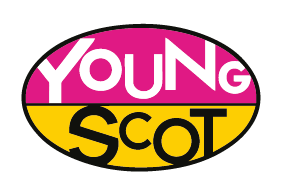Goodbye Personas, Hello Story Narratives
Here at Young Scot, we believe that young people should be empowered to play an active role in making transformative changes in the services that shape their lives and influencing decision-makers to respond to the needs and concerns of young people.
We believe that young people are the experts of their own experiences. We know that they are students, entrepreneurs, campaigners, parents, carers, workers, volunteers, creators, and much more. We know they have varied interests and hobbies, different aspirations and challenges, are at different stages of life and come from different cultural backgrounds. In our work, we strive to create content and information which appeals to all these types of young people, fulfilling the needs they have to live successful lives, navigate transitions, and take advantage of opportunities.
The unique perspectives and knowledge that young people bring to Young Scot is funnelled through our Co-design service, where our skilled staff team work to bring young volunteers together to uncover experiences and evidence to drive ideas and solutions fit for purpose.
Through our work we know only too well that young people have complex lives and are often juggling many different challenges which affect their ability to participate. These include caring responsibilities and work commitments, through to poor transport provision in rural areas and mental health struggles which make it hard to get out of the house. It is our responsibility to provide inclusive access to Young Scot volunteering. This is why we cover all young people’s travel, accommodation and subsistence expenses, as well as adjustments to enhance accessibility and provide additional support for those who need it.
Despite our work on inclusion and outreach, we simply can’t hear from all young people in Scotland first hand.
In the past, we have used a popular co-design tool called a ‘persona’ to try and understand the needs of young people we don’t get to speak to in person. A persona is a made-up collection of demographic information about a person, along with a few imagined interests or hobbies, and perhaps a picture or stock photo as well. From these personas we can find out that, for example, Sam is a young carer for their mum, enjoys playing computer games, and does well at school. We can then think about what kind of service Young Scot could provide to Sam that would enhance their life. But more recently, we have become concerned that too often personas can – even with the best intentions - reinforce stereotypes about gender or age; can stifle our ability to put ourselves in a young person’s shoes; and lead us to think that we have nothing in common with a persona because of the different conditions of our lives.
We believe that young people are the experts of their own experiences. We know that they are students, entrepreneurs, campaigners, parents, carers, workers, volunteers, creators, and much more.
Designer Indi Young highlights some of these issues and her ideas for new solutions in a recent article, and we have taken up the challenge to address these difficulties. We understand that a persona approach to considering young people’s needs can mean that our services don’t have the impact they should have, or that our information doesn’t cover the things young people really want and need to know.
To address this, we have stopped using personas. We’ve begun to test Story Narratives instead – a concept developed from Indi Young’s idea of ‘behavioural audience segments’. For us, a Story Narrative is about capturing a moment in time in a young person’s life from their perspective. Instead of finding out that Sam is a young carer, we might imagine Sam saying:
“I love my mum, but it can be hard to care for her. I don’t have a lot of time to spend with friends or to play computer games in my room. I want to go to university one day, so that I can get a great job and support my mum better, get her out of this old house, but I’m not sure how I’m going to do that right now.”
Having heard this narrative from Sam, we can think differently about their needs. We don’t know Sam’s age, gender, or location, but we can use this narrative to come up with new ideas for our services. This might include something like a podcast about applying to university as a young carer that Sam could listen to while making dinner for their mum one evening.
We are working up tools to go alongside this narrative, including varied attributes and empathy maps to encourage even deeper thinking – what are this person’s hopes and fears, where do they get information from, what do they want to tell us? These narratives will never replace young people’s stories as heard directly from them, but instead help us start to identify the gaps in our services and where we can be better.
The result is that our teams end up with a deep understanding of young people that could only result from having to imagine being in their shoes and telling someone else their story. The team can now bring the insights generated from the task to combine with outputs from co-design work with real young people, into creating new services and information for young people in Scotland that address their needs, aspirations, and challenges.
We aim to keep developing and thinking critically about the tools that we use in our Co-design service, and welcome new challenges from our networks, stakeholders and communities. Get in touch with our Co-design Team to chat about what has inspired you to think differently about your design toolkits in the past and let us know the challenges you’ve been tackling to make your practice as inclusive as possible.

